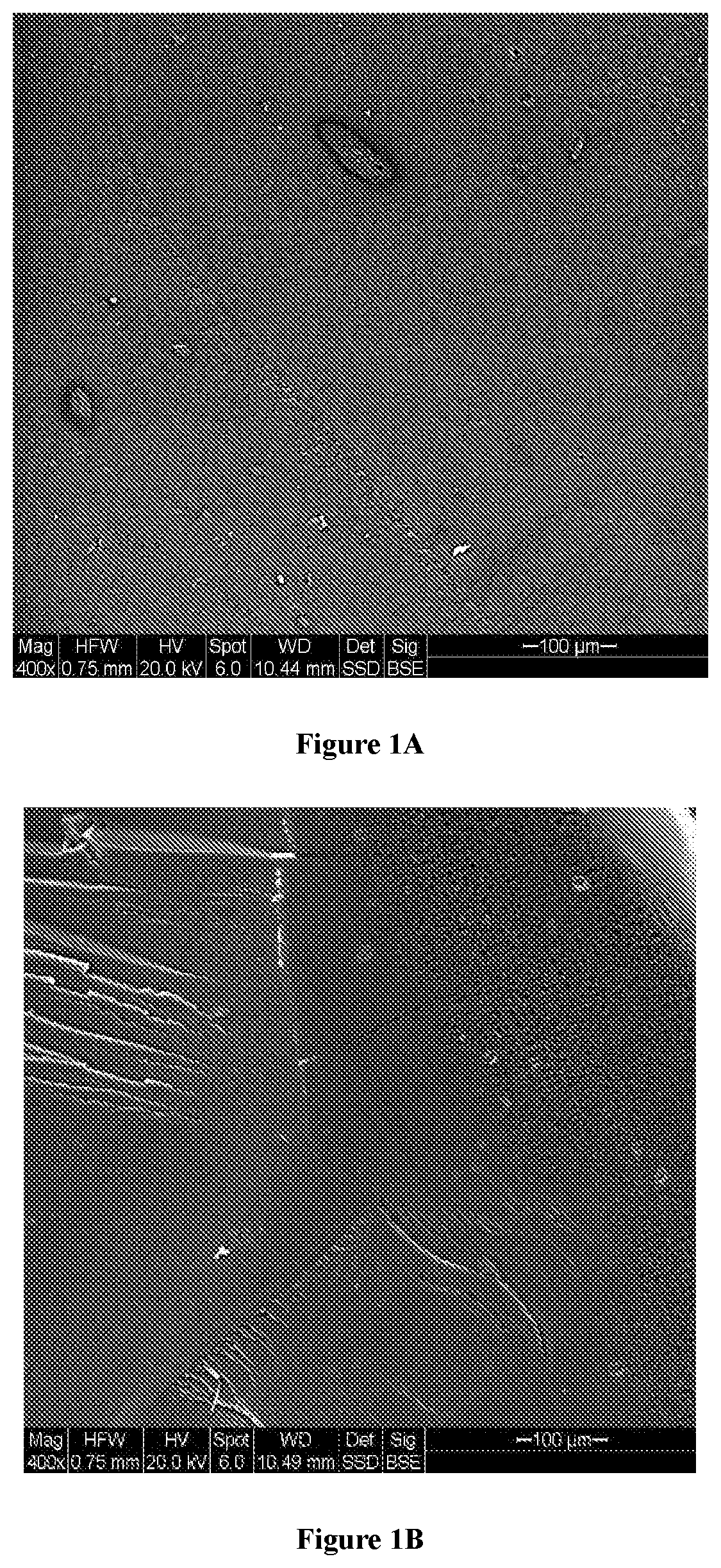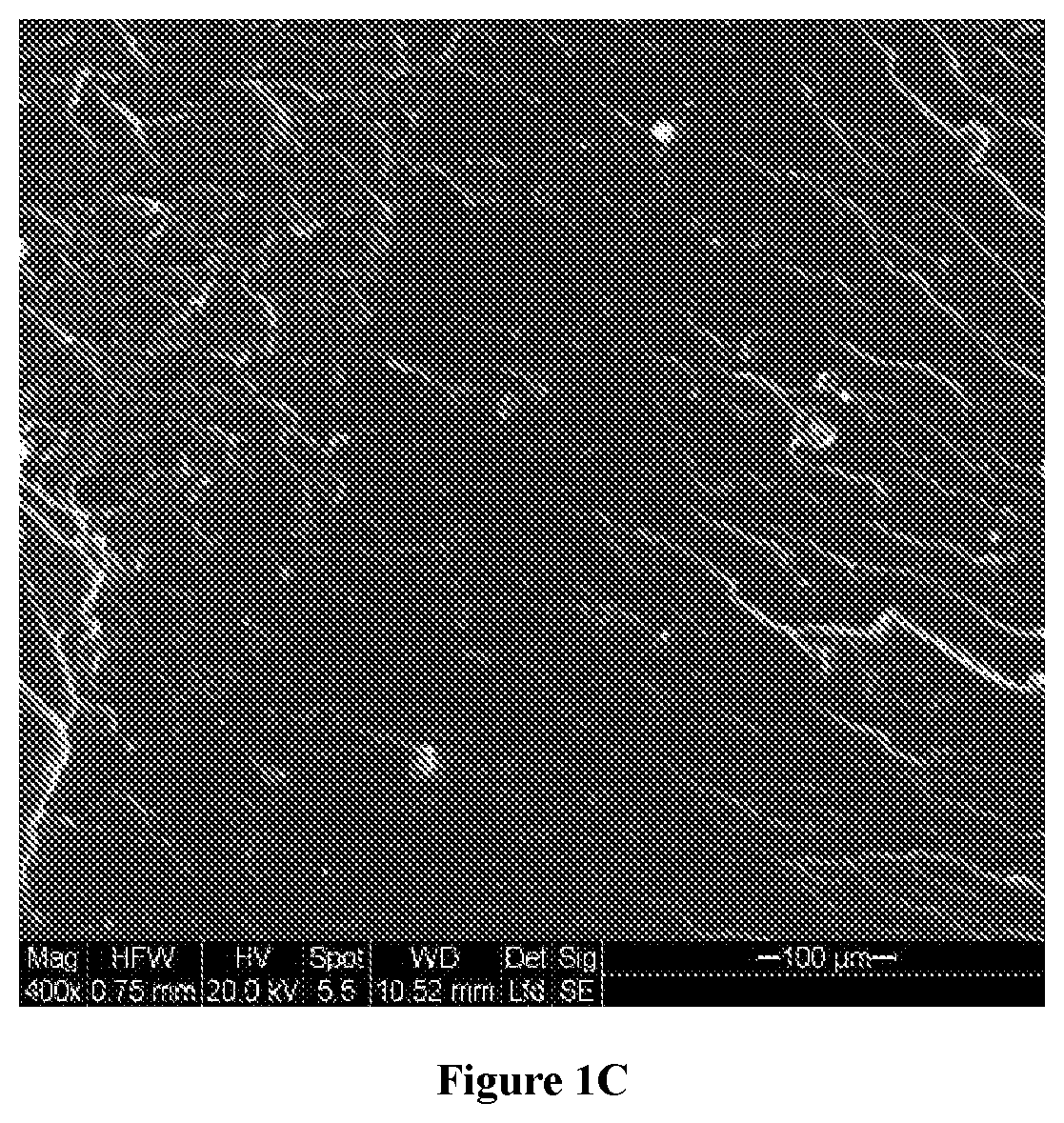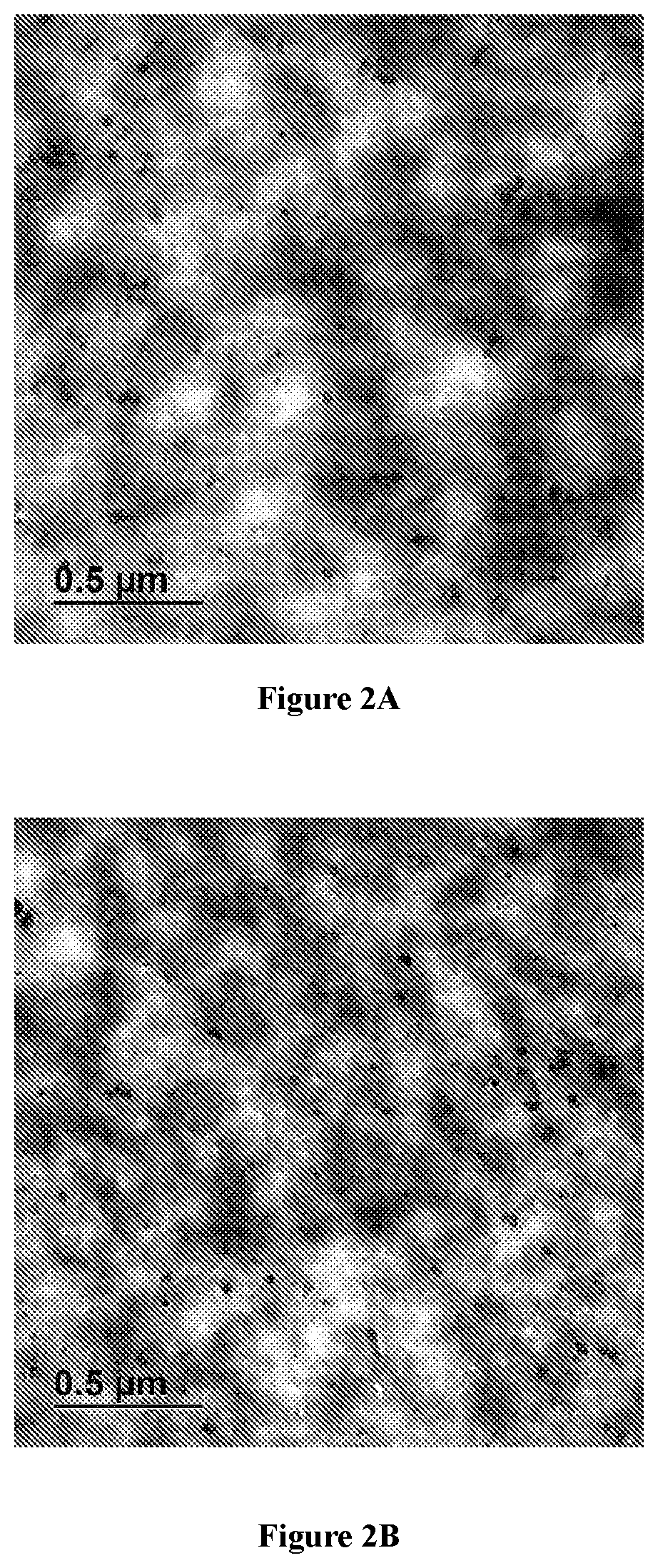High jetness carbon black compositions
a carbon black, high-jetness technology, applied in the field of carbon black, can solve the problems that carbon blacks are difficult to disperse in some systems, and achieve the effect of improving the quality of carbon blacks
- Summary
- Abstract
- Description
- Claims
- Application Information
AI Technical Summary
Benefits of technology
Problems solved by technology
Method used
Image
Examples
example 1
ch Compositions and Analysis Via SEM
[0065]A first masterbatch (“A”) was prepared using a twin screw extruder and polyamide 6 resin, as described above, using 30 wt. % of Raven 2500 Ultra carbon black. The masterbatch extrudate was cut with a razor blade and cross sections examined using a scanning electron microscope (SEM) to assess the carbon black dispersion. The examined extrudate contained several areas of poorly dispersed carbon black, which can be common for resin systems comprising high surface area carbon blacks, as illustrated in FIG. 1A.
[0066]A second masterbatch (“B”) was prepared, as described above, but using 20 wt. % Raven 5100 Ultra carbon black in polyamide 6 resin. The masterbatch extrudate from a twin screw extruder was examined, and the extrudate similarly had several areas of poorly dispersed carbon black, as illustrated in FIG. 1B.
[0067]A third masterbatch (“C”) was prepared, as described above, but using 20 wt. % Raven 5100 Ultra carbon black with 10 wt. % N,N′...
example 2
ch Analysis Via TEM
[0068]Carbon black masterbead compositions using Raven 2500 Ultra, Raven 3000 Ultra, and Raven 5100 Ultra carbon blacks, each comprising from about 55 wt. % to about 65 wt. % carbon black with the balance comprising N,N′-ethylene bis(stearamide). Each masterbead composition was subsequently let down to 0.5 wt. % carbon black loading using polyamide 6 resin, and then injection molded at 260° C. into color chips. Slices of the resulting chips were prepared and analyzed via transmission electron microscopy (TEM) to evaluate carbon black dispersion.
[0069]Each of the let down compositions exhibited excellent dispersions of carbon black, as illustrated in FIGS. 2A, 2B, and 2C, respectively, illustrating the benefit of the additive and masterbead technology on improving carbon black dispersion.
example 3
formance
[0070]Three masterbatch compositions were prepared, as in Example 1, using three piano blacks (Raven 3500 Ultra, Raven 5100 Ultra, and Raven 5100 with EBS), each in polyamide 6. The carbon black loading in each masterbatch composition was 20 wt. % and the EBS concentration in the third masterbatch composition was 10 wt. %. Each of the three masterbatch compositions was then let down to 1.0 wt. % carbon black loading, and analyzed using a Hunter color analyzer, as described herein. L values for the three compositions were 5.6 (Raven 3500 Ultra), 3.3 (Raven 5100 Ultra), and 3.1 (Raven 5100 Ultra with EBS). As illustrated in FIG. 3, the piano blacks all exhibited excellent jetness and blue undertone color performance, consistent with their surface area. Raven 5100 Ultra was significantly jetter than Raven 3500 Ultra, as Raven 5100 Ultra has a much higher surface area. Analysis of the masterbatch compositions by SEM indicates that the presence of EBS improves the macrodispersion...
PUM
| Property | Measurement | Unit |
|---|---|---|
| wt. % | aaaaa | aaaaa |
| wt. % | aaaaa | aaaaa |
| wt. % | aaaaa | aaaaa |
Abstract
Description
Claims
Application Information
 Login to View More
Login to View More - R&D
- Intellectual Property
- Life Sciences
- Materials
- Tech Scout
- Unparalleled Data Quality
- Higher Quality Content
- 60% Fewer Hallucinations
Browse by: Latest US Patents, China's latest patents, Technical Efficacy Thesaurus, Application Domain, Technology Topic, Popular Technical Reports.
© 2025 PatSnap. All rights reserved.Legal|Privacy policy|Modern Slavery Act Transparency Statement|Sitemap|About US| Contact US: help@patsnap.com



